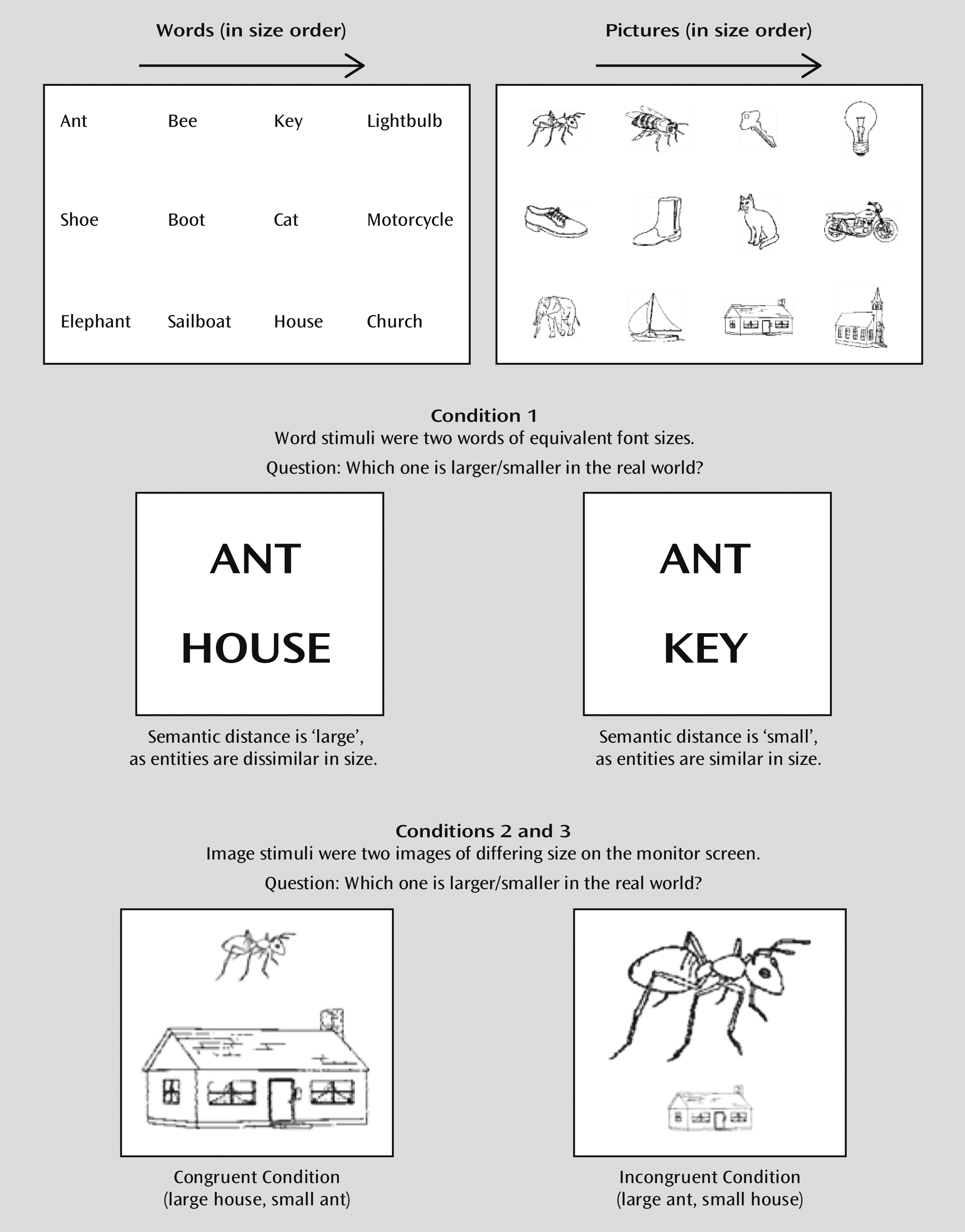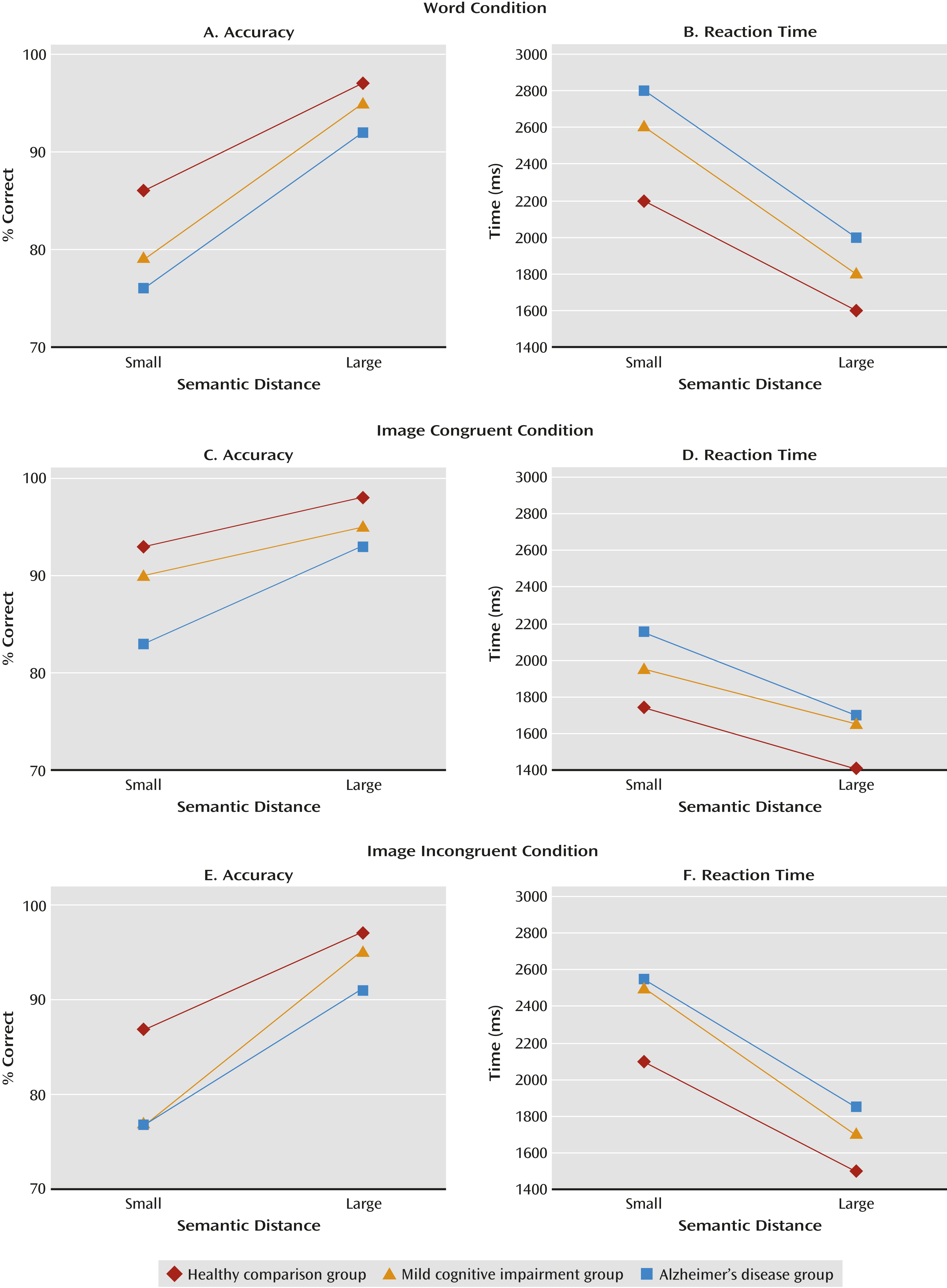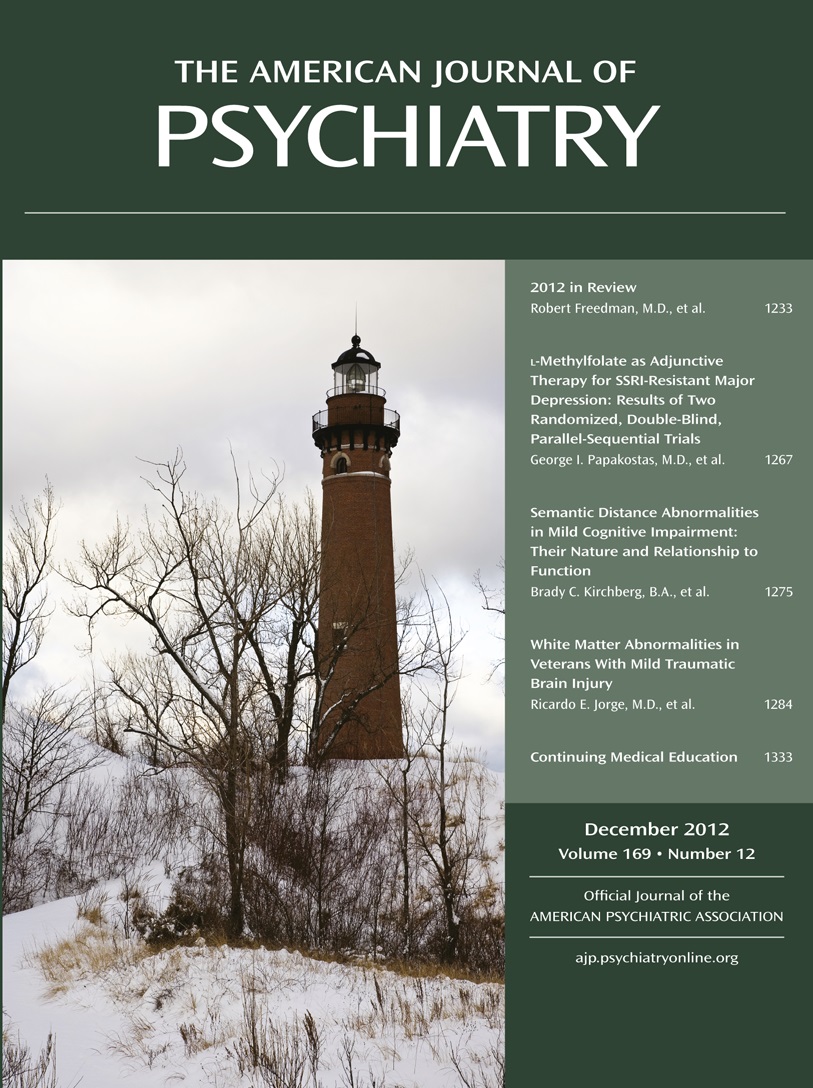Semantic Distance Abnormalities in Mild Cognitive Impairment: Their Nature and Relationship to Function
Abstract
Objective
Method
Results
Conclusions

Method
Staging Instruments
Participants
| Variable | Healthy Comparison Group (N=70) | Mild Cognitive Impairment Group (N=25) | Alzheimer’s Disease Group (N=27) | |||
|---|---|---|---|---|---|---|
| N | % | N | % | N | % | |
| Malea | 22 | 31 | 8 | 32 | 17 | 63 |
| Mean | SD | Mean | SD | Mean | SD | |
| Age (years) | 75.3 | 8.7 | 76.0 | 6.1 | 78.2 | 7.1 |
| Education (years) | 15.1 | 3.3 | 14.8 | 3.6 | 14.6 | 3.7 |
| Mini-Mental State Examination scoreb | 28.4 | 1.6 | 26.3 | 1.8 | 21.7 | 3.4 |
| UPSA scorec (percent) | 84.9 | 9.8 | 74.5 | 10.2 | 57.0 | 13.0 |
Mild cognitive impairment.
Alzheimer’s disease.
Cognitively healthy comparison subjects.
Measures
Neurocognitive Battery.
Semantic distance task.

Test of everyday functional competence.
Procedure
Results
Word Condition
Word accuracy.
| Reaction Time | Proportion Correct | ||||
|---|---|---|---|---|---|
| Task | df | F | p | F | p |
| Words | |||||
| Diagnosis | 2, 119 | 9.88 | 0.0001a | 5.55 | 0.005a |
| Distance | 1, 119 | 556.74 | 0.0001 | 198.01 | 0.0001 |
| Diagnosis-by-distance interaction | 2, 119 | 6.69 | 0.002 | 3.86 | 0.02 |
| Images (congruent) | |||||
| Diagnosis | 2, 119 | 4.84 | 0.001b | 5.64 | 0.005a |
| Distance | 1, 119 | 200.50 | 0.0001 | 75.60 | 0.0001 |
| Diagnosis-by-distance interaction | 2, 119 | 1.78 | 0.17 | 4.71 | 0.01 |
| Images (incongruent) | |||||
| Diagnosis | 2, 119 | 4.12 | 0.02a | 6.84 | 0.002a |
| Distance | 1, 119 | 98.01 | 0.0001 | 109.08 | 0.0001 |
| Diagnosis-by-distance interaction | 2, 119 | 0.42 | 0.66 | 3.63 | 0.03 |

Word reaction time.
Image Conditions
Image accuracy.
Image reaction time.
Prediction of Function
Discussion
Semantic Processing
Everyday Functional Competence and Semantic Processing
Limitations
Implications
Summary
Supplementary Material
- View/Download
- 32.94 KB
References
Information & Authors
Information
Published In
History
Authors
Funding Information
Metrics & Citations
Metrics
Citations
Export Citations
If you have the appropriate software installed, you can download article citation data to the citation manager of your choice. Simply select your manager software from the list below and click Download.
For more information or tips please see 'Downloading to a citation manager' in the Help menu.
View Options
View options
PDF/EPUB
View PDF/EPUBLogin options
Already a subscriber? Access your subscription through your login credentials or your institution for full access to this article.
Personal login Institutional Login Open Athens loginNot a subscriber?
PsychiatryOnline subscription options offer access to the DSM-5-TR® library, books, journals, CME, and patient resources. This all-in-one virtual library provides psychiatrists and mental health professionals with key resources for diagnosis, treatment, research, and professional development.
Need more help? PsychiatryOnline Customer Service may be reached by emailing [email protected] or by calling 800-368-5777 (in the U.S.) or 703-907-7322 (outside the U.S.).

